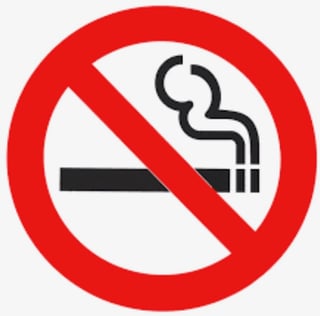 The human body has an amazing ability to heal and repair damage when supported with good nutrition, adequate quality sleep and consistent movement. Healing from the damage done from smoking cigarettes is not different. This article explains what happens to your body in the first hours, days, weeks and years after a person stops smoking. The benefits are almost instant; as soon as a person stops smoking their body begins to recover in the following ways:
The human body has an amazing ability to heal and repair damage when supported with good nutrition, adequate quality sleep and consistent movement. Healing from the damage done from smoking cigarettes is not different. This article explains what happens to your body in the first hours, days, weeks and years after a person stops smoking. The benefits are almost instant; as soon as a person stops smoking their body begins to recover in the following ways:
After 1 hour
In as little as 20 minutes after the last cigarette is smoked, the heart rate drops and returns to normal. Blood pressure begins to drop, and circulation may start to improve.
After 12 hours
After just 12 hours without a cigarette, the body cleanses itself of the excess carbon monoxide from the cigarettes. The carbon monoxide level returns to normal, increasing the body's oxygen levels.
After 1 day
Just 1 day after quitting smoking, the risk of heart attack begins to decrease.
In as little as 1 day after smoking cessation, a person's blood pressure begins to drop, decreasing the risk of heart disease from smoking-induced high blood pressure. In this short time, a person's oxygen levels will have risen, making physical activity and exercise easier to do, promoting heart-healthy habits.
After 2 days
Smoking damages the nerve endings responsible for the senses of smell and taste. In as little as 2 days after smoking cessation, a person may notice a heightened sense of smell and more vivid tastes as these nerves heal.
After 3 days
3 days after quitting smoking, the nicotine levels in a person's body are depleted. While it is healthier to have no nicotine in the body, this initial depletion can cause nicotine withdrawal.
Around 3 days after quitting, most people will experience moodiness and irritability, severe headaches, and cravings as the body readjusts.
After 1 week
In the first five to eight days you’ll experience three cue-induced cravings per day. If you normally lit up after a meal, it’s likely that will be the time you experience these cravings. You can fight these cravings by substituting something else, such as going for a walk, as these cravings typically don’t last more than three minutes.
After 2 weeks
Within two weeks the blood circulating in your gums and teeth will return to that of a nonsmoker. This helps heal periodontics and improve your breath.
After 1 month
In as little as 1 month, a person's lung function begins to improve. As the lungs heal and lung capacity improves, former smokers may notice less coughing and shortness of breath. Athletic endurance increases and former smokers may notice a renewed ability for cardiovascular activities, such as running and jumping.
After 1-3 months
For the next several months after quitting, circulation continues to improve.
After 9 months
The lungs have significantly healed themselves. The delicate, hair-like structures inside the lungs known as cilia have recovered from the toll cigarette smoke took on them. These structures help push mucus out of the lungs and help fight infections.
Many former smokers notice a decrease in the frequency of lung infections because the healed cilia can do their job more easily.
After 1 year
One year after quitting smoking, a person's risk for coronary heart disease decreases by half. This risk will continue to drop past the 1-year mark.
After 5 years
The body has healed itself enough for the arteries and blood vessels to begin to widen again. This widening means the blood is less likely to clot, lowering the risk of stroke.
The risk of stroke will continue to reduce over the next 10 years as the body heals more and more.
After 10 years
After 10 years, a person's chances of developing lung cancer and dying from it are roughly cut in half compared with someone who continues to smoke. The likelihood of developing mouth, throat, or pancreatic cancer has significantly reduced.
After 15 years
After 15 years of having quit smoking, the likelihood of developing coronary heart disease is the equivalent of a non-smoker. Similarly, the risk of developing pancreatic cancer has reduced to the same level as a non-smoker.
After 20 years
After 20 years, the risk of death from smoking-related causes, including both lung disease and cancer, drops to the level of a person who has never smoked in their life. Also, the risk of developing pancreatic cancer has reduced to that of someone who has never smoked.
Related Article: New Study: Toast, Cereals and Over-Cooked Starchy Foods Linked to Acrylamide, a "Cancer Risk"
Related Article: Study: A New Way to Slow Cancer Cell Growth
